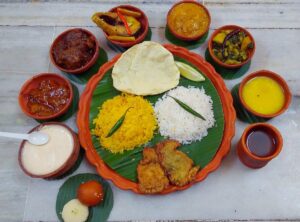Happy New Year – 2023

Happy New Year to you and yours from the Friends Life Care team. May the new year bring you much health and happiness. The DEIB “Diversity, Equity, Inclusion, and Belonging” Task Force at at Friends Life Care Partners shared a list of some different ways that the new year — January 1st — has been celebrated and commemorated around the world.
Traditions and Customs Around the World
Brazil – In Brazil, this time of the the year is a kick off to summer and many people head to the beach. After midnight, it is a tradition to jump through seven waves and make seven wishes. Wearing all white can signify good luck, prosperity, and a way to wards off evil spirits.
Columbia – People who have wishes for travel in the new year may carry empty suitcases around the block at midnight. Lentils are eaten in the hopes to bring luck and affluence. Some will also place three potatoes under each family members’ bed – one is fully peeled, one is half peeled and one is unpeeled. At midnight each person grabs for one with eyes closed and depending on the potato they select, can either  expect a year of good fortune, financial challenges, or a mix of both.
expect a year of good fortune, financial challenges, or a mix of both.
Denmark – A tradition has been to break plates, bowls, and other dishes at the doors of friends and family to ward off bad spirits. It holds that the more broken dishware you accumulate on your doorstep, the better off you’ll be in the new year. Some people will also jump off of chairs at midnight as they physically “leap” into the new year.
Ethiopia – The Ethiopian New Year is called “Enkutatash” which means gift of Jewel in Amharic. Enkutatash falls at the end of the rainy season and this traditional commemoration of New Years began centuries ago. It follows the tale of the Queen of Sheba who returned from travel to Jerusalem and was welcomed home with a presentation of fine jewels. This gifting of jewels led to the name of the event. On the eve of this celebration, people go to a church service and pray for good things in the New Year ahead. On New Year day itself, families and friends come together for festive gatherings and exchange gifts.
India – In India, there are many diverse ways to celebrate New Years. One is a tradition to build a statue of an old man and then burn it down. The old man is a symbol of the old year and burning it therefore makes way for the new year. Here is a list of different celebrations by geography:
 Gudi Padwa, Marathi New Year
Gudi Padwa, Marathi New Year
Ugadi, Telugu New Year
Puthandu, Tamil New Year
Baisakhi, Punjabi New Year
Bohag Bihu, Assamese New Year
Bestu Varas, Gujarati New Year
Pohela Boishakh, Bengali New Year
Vishu, Malayalam New Year
Japan – Eating Soba noodles in a new year augurs in wishes for health and longevity. In addition, many people hold “Year Forgetting” parties in December. This get-together is called Bonekai. On December 31st, Buddhist temples bang the gong 108 times – which represents all of the 108 temptations that have to be overcome to achieve Nirvana.
Philippines – Serving 12 round fruits is a tradition as the shape symbolizes the shape of a coin. And the coin represents good fortune. There are 12 to represent one for each month of the year.. You can expect to find apples, melons, oranges, and grapes as they are popular choices, but any round fruit will do.
Romania – On New Year’s Eve, it is a customary to dress as a bear. This includes wearing real fur and doing a “bear dance” from house to house. On New Year’s day, St. Vasile is celebrated. The door-to-door bear visits are replaced with children caroling a song called Sorcova. This song is a wish for people to enjoy a wonderful year. Listen to a choir singing Sorcova with the traditional sticks or twigs decorated with colorful flowers. Click this link below.
Spain – If you eat 12 grapes at midnight, it will bring good luck. This originates from the 20th century and was a way to create a demand for grapes in the winter. Nevertheless, this brings with it hopes for a fruitful and happy new year
Other New Year’s Celebrations
Along with New Years celebrations on January 1st, there are other groups that follow different calendars and have different New Years. Here are several:
January 7: Mahayana New Year – Mahayana is a branch of Buddhism most commonly observed in Northeast Asia; for example, China, Japan, Korea, Taiwan, Mongolia, and Tibet. Different countries have customs for those who follow Mahayana Buddhism.
 January 14: Old/Orthodox New Year – Orthodox New Year is a traditional holiday in recognition of the beginning of the New Year in the Julian calendar. In the Gregorian calendar, this holiday falls on January 14th every year. This holiday is observed by Orthodox Christians all around the world.
January 14: Old/Orthodox New Year – Orthodox New Year is a traditional holiday in recognition of the beginning of the New Year in the Julian calendar. In the Gregorian calendar, this holiday falls on January 14th every year. This holiday is observed by Orthodox Christians all around the world.
January 22: Lunar New Year – The Lunar New Year marks the first new moon of the lunisolar calendar. This is a calendar traditionally used in many east Asian countries including China, Vietnam, Singapore, and South Korea. For people who commemorate Lunar New Year, it is considered to be one of the most important holidays of the year!
Image sources
Broken dishes – https://www.the-sun.com/news/203333/most-bizarre-new-years-eve-traditions-around-the-world-from-partying-in-cemeteries-to-hurling-sofas-out-the-window/
Indian new year – https://commons.wikimedia.org/wiki/File:Bengali_new_year_food_comb.jpg
Sources for the information curated in this post:
https://www.invaluable.com/blog/new-years-traditions/
https://bestlifeonline.com/global-new-years-eve-traditions/
